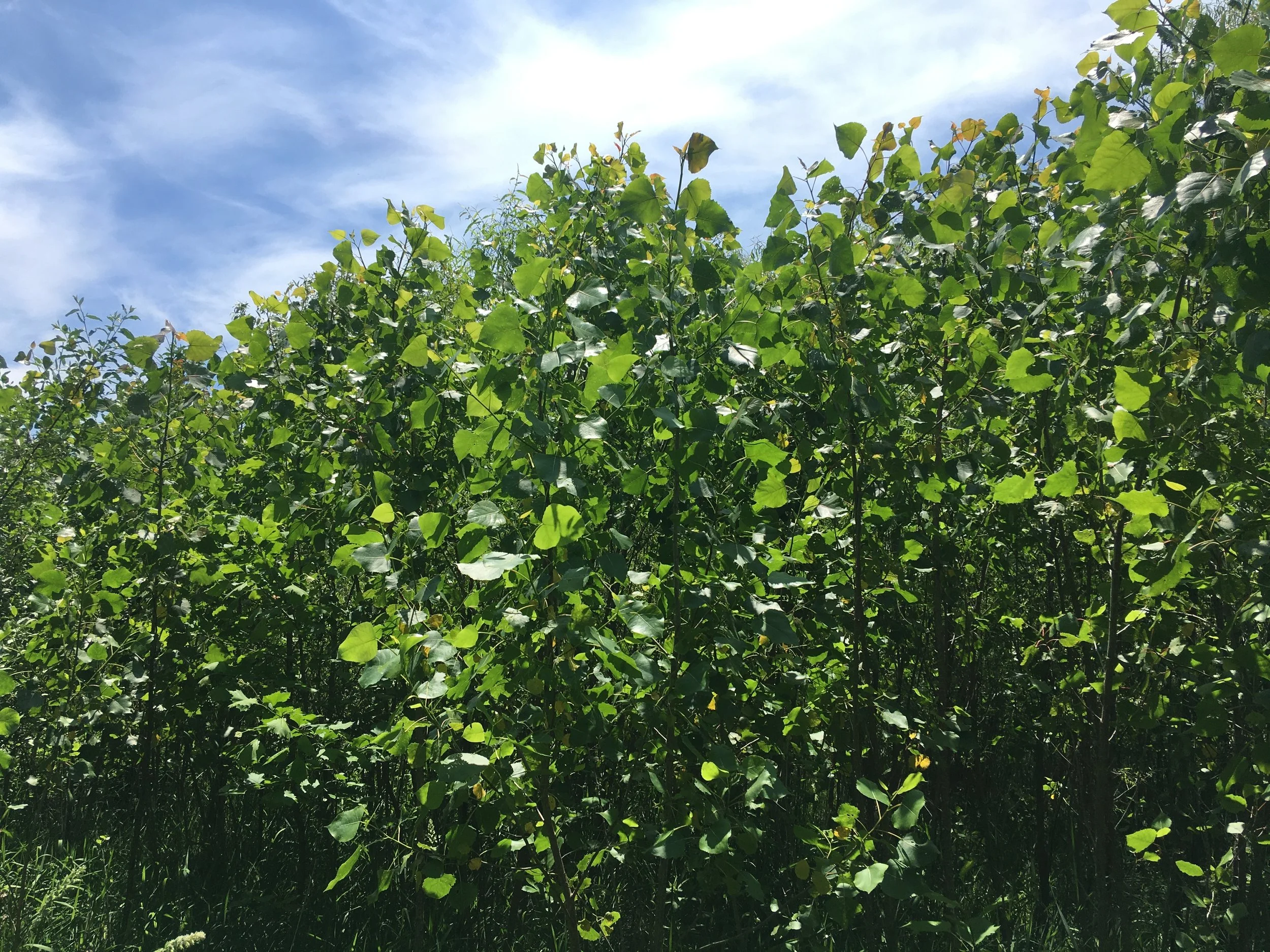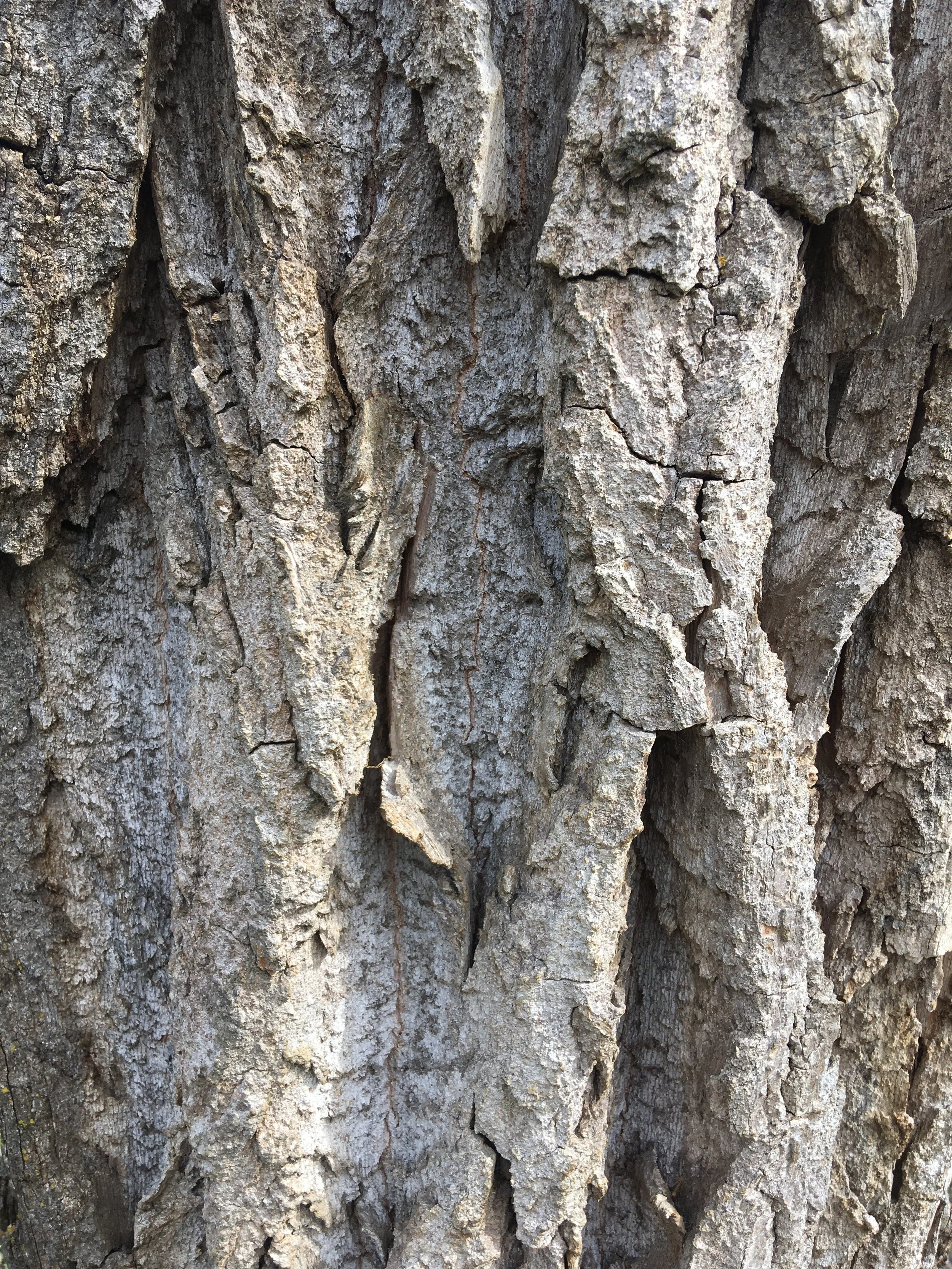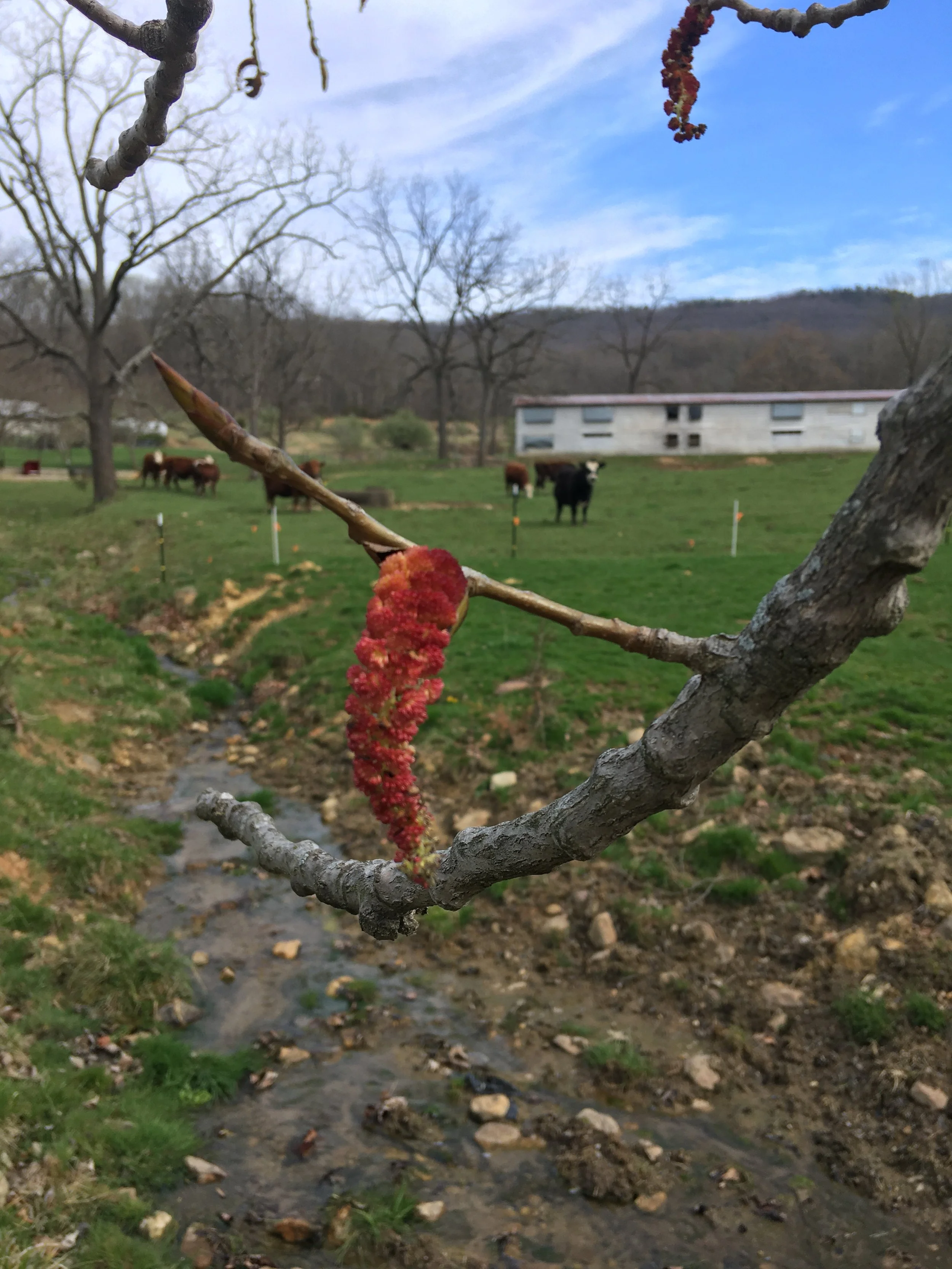Cottonwood






Cottonwood
Populus deltoides
Plant for the festive flowers and the star-shaped pith, the mycorrhizal remediation, the fastest growth and quick coppice, and biomass gifts of fodder and mulch!
Hardy from Zones 3-9. Up to 100 feet tall and 50 feet wide.
Native trees play vital roles in ecosystems, and since native ecosystems have been human-tended for food and fiber for millennia, native trees also serve vital roles for agroecosystems. Eastern Cottonwood is one of those incredible trees!
Cottonwoods make up a popular section of the Populus genus, native to Western Asia, Europe, and North America. Back in the day Native American Cottonwoods included six species, but these days most scientists whittle it down to three with a few subspecies across Turtle Island. Eastern Cottonwood grows from Texas up to Quebec, from Ohio down to the Deep South in the woodland company of Ash, Elm, Maple, Oak, Birch, Sycamore, Hackberry, and Willow. They’re adaptable to a wide climate spectrum from temps over 100 degrees to below -50!
Cottonwood isn’t extremely common in Virginia, but when they are they’re usually in river bottoms wedged below mountains. Sometimes we’ll see them old and broad in the full heat of high slopes. Young bark is silver smooth, but in maturity the bark cracks into craggy gray ridges and valleys. They do well in well-drained loams within root reach of water. Cottonwood cycles a tremendous amount of water, but they really can’t stand waterlogged conditions. They will, however, withstand periodic flooding in gravel and silt.
The Populus species known as Eastern Cottonwood is also known as Necklace Cottonwood for the long narrow green seed catkins. Cottonwood is dioecious, meaning separate trees have male and female flowers. Male (or pollen-producing) catkins uncurl from red-purple buds that look like lobster claws fabulously decked out for Mardi Gras. Female (or seed-producing) catkins are the narrow green ones that burst open with cotton-like hairs parachuting seeds, hence the common name. Urban landscapers favor male trees because every May female trees coat cars and yards in cotton white. One tree can release 40 million cotton-covered seeds in a season, but most dry out without open soil and full sun on mudbanks. The easiest way to propagate Cottonwood is by cuttings from first-year growth.
When cutting the stems, pay attention to the pith. You might notice a reddish five-pointed star lighting up the path of nutrients. A starry-shaped pith is pretty common for members of the Willow family, which includes Cottonwood. A Dakota story tells how that astrological sign came to Cottonwood when a little star hid in the branches to listen to the beautiful songs of humans. Cottonwood is called the “tree of life” by the Oceti Sakowin, or the Council of Seven Fires, a Siouan confederacy of Lakota and Dakota tribes in the Great Plains. Siouan stories hold the gifts of Cottonwood in a sacred light and the branches become arbors in Sun Dance ceremonies. The trunks are dugout for canoes, bark and leaves dried as medicine for menstrual cramps and fevers, the cambium can be ground into an emergency flour for soups and stews, and the sticky yellow resin in the thick pointed twig buds contain salicin, an anti-inflammatory chemical known as a painkiller.
The soft wood makes good medicine and craft, but it’s not a favored timber or firewood. Cottonwood rots quickly and burns poorly. The tree is commercially planted for cheap pulpwood in pallet boxes and shipping crates. Branches often snap in storms, which, along with the cotton-like seeds, lead many people to label them a “weed” tree in highly urbanized and industrialized settings.
Despite the litter of cotton and twigs, we think Cottonwood has enormous agroforestry potential, and not just because it’s one of the largest trees east of the Rocky Mountains. Cottonwood is also the fastest growing tree in North America! Growth rates of 15 feet per year have been recorded, and they can average 5 feet per year over 25 years. So many critters want to eat the big lush triangular toothed leaves, which earn the tree the scientific species name deltoides. Dark forest green in growth, bright yellow in the Fall, the leaves attach to the stem by a flat petiole, which is why they shake even in a light breeze like their cousin Quaking Aspen. Fresh leaves are a good source of cellulose for ruminants, high in protein and minerals and low in tannins. Lots of Lepidoptera (moths and butterflies) eat the leaves, and every kind of browsing animal munches on leaf, twig, and bark: beaver, rabbit, deer, elk, and more. Old trees house nests of Eagle, Osprey, Owl, and Hawk. Leaf beetles, twig borers, and rust-causing fungi also snack on Cottonwood, and can shorten the lifespan.
Trees are typically short-lived around 80 years old, but they can live much longer in protected conditions. Coppice keeps them alive and healthy: they’re known to resprout from stump cuts after 25 years of age. Researchers at University of Arkansas studied the ecological and economic potential of agroforestry systems with Cottonwood and Switchgrass alley-cropped with annuals to produce bioenergy while also improving water quality, retaining nitrogen, and wildlife habitat on low-quality agricultural land in the Mississippi Valley. Cottonwoods hold and remediate soil by pulling toxins into root systems, where the tree alters the chemical’s composition, and the roots aid microbial decomposition of chemicals in the soil. Coppice rotations were timed for different crop uses: biofuel energy cuts every 2-3 years, with pulpwood at 5-10 years and sawtimber cuts at 15-20. On marginal croplands, Cottonwood yielded 6-10 green tons per acre per year, but on better sites that harvest jumped to 16-18 tons of woody biomass
Cottonwood forms dense shelterbelts, produces large quantities of biomass, and serves as animal fodder while remediating the soil. Sounds like a powerful candidate for agroforestry
We offer bundles of 5 12” cuttings and bundles of 25 3’ stakes from a diverse stand of vibrant seedlings along a nearby lakeshore. You’ll most likely receive a mix of male and female flowered stems.